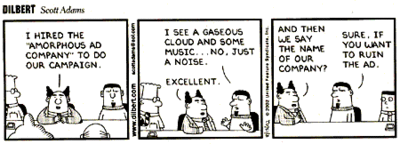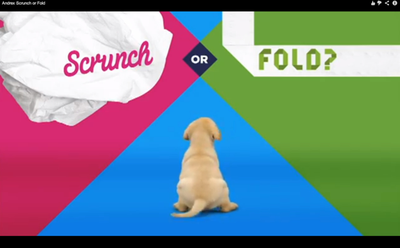How advertising really works
‘Advertising troubles both sociologists and financial directors: the former because they think it works, the latter because they think it does not.’ (Bullmore 1999.)
I promised a while back to return to Byron Sharp’s thought-provoking book ‘How Brands Grow’. It’s taken me some time to get round to it, but for those of you who've always wanted to know how advertising really works’ here’s some of what Sharp says in the chapter on that subject.
He writes that recent discoveries in neuroscience and psychology indicate that advertising works by creating and refreshing memories, and that advertising influences non-conscious, emotional decision-making. This contradicts the traditional ad effectiveness model, which assumes people remember messages and make rational decisions based on persuasive communications. (Much advertising pre-testing is based on that traditional model. People are asked to examine consciously their responses to rationally persuasive messages, so they respond rationally – "That claim wouldn't persuade me to consider that product". Even asking people to try to express how something makes them feel causes 'cognitive bias', a tendency towards cognitive, conscious responses.)
Sharp looks first at the sales response to brand advertising. He argues that brand advertising does influence sales but that its effects are hard to identify because
b) the effect of today’s advertising is spread out over a long time, so spend doesn’t result in sudden dramatic sales gains. This is particularly true for large brands, where current ad spend is small in comparison to historical marketing, physical presence and established saliency in people’s minds.
Most advertising affects people who won’t buy the brand for weeks (or months or years, if it’s a high ticket item like a car or a computer). So a change in weight of advertising doesn’t produce an easily-seen change in short-term sales.
Sharp’s findings, based on “reliable methodologies, such as experiments” are:
– advertising generates sales (Good news for advertising practitioners.)
– some ad copy is much more effective than others; some hardly works at all (No surprise there, or success would be simply a matter of outspending your competitors)
– creative copy without a persuasive message (rational reason to buy) can still be very sales effective
– media strategy that reaches more people is more effective than reaching fewer people more often; continuous advertising is more effective than intermittent bursts, because it counteracts memory decay.
He goes on, “As people screen out so much advertising, the challenge is to get past the brain’s screening mechanisms and generate that little emotional reaction in the direction of acceptance: ‘I will pay attention to this’. Therefore the primary task of advertising agencies is to generate ideas that viewers will notice and and will be willing to process over and over. This process must be brand-centric; it must refresh the memory structures that relate to the brand. This is a difficult task, which is why most advertising fails.”
This seems to be a scientist’s way of saying what we know to be true from experience: work that is original and relevant is effective. It was perhaps best expressed by Howard Luck Gossage in the ‘60s."The real fact of the matter is that nobody reads ads. People read what interests them, and sometimes it's an ad." Our job is to make things that are more interesting and engaging than all the other distractions and entertainments that compete for people’s attention.
This approach is different from "traditional" wisdom about advertising, as put forward famously by Rosser Reeves in his theory of the 'Unique Selling Proposition' – that a brand must if possible differentiate itself through tangible product attributes and communicate those attributes positively. This view is still highly influential with many advertisers today.
Sharp continues, “We know that very little thinking, if any, can be described as purely rational. Emotion is a primary source of human motivation and exerts substantial influence on attention memory and behaviour… People watch movies, listen to music and read books largely for an emotional ride. They enjoy gaining the same from advertising and when they get it they pay more attention.”
Or, as we say here at W+K, Move me, dude.
Here’s our founder Dan Wieden on the topic:
“It’s been the same since people gathered around the campfire to hear a story. Are you a good storyteller or a bad storyteller? Make me laugh, make me cry, make me do something. Whether you do it on the Internet or on a balloon floating above me, I don’t care. Just move me, dude.”
More from Sharp: “Many companies are trapped in the intentions / preference paradigm. (The belief that persuasive advertising that influences stated brand preference is more likely to affect sales.) They brief their agencies and evaluate their work in line with this model. Consequently, they produce advertising filled with persuasive arguments (often about trivial benefits) that are rejected, misunderstood or ignored by viewers. They also produce advertising that fails to refresh or build appropriate memory structures because management’s attention is on the selling message. Such advertising fails to communicate consistently the distinctive aspects of the brand.”
It’s not that easy to remember examples of campaigns like this. Because, duh, they are unmemorable. But one that comes to mind from my past experience is Citroen. This is a company that has resisted attempts to build consistent associations and emotional attributes, and seeks to distance itself from the brand heritage that does persist as a result of provenance and product design. (French and quirky.)
So they produce generic car ads like these, which describe features like ‘the most sensational panoramic windscreen in its class’ and ‘CO2 emissions from only 99 grammes per kilometer’. Wow, I've been dreaming of owning a car with just that level of CO2 emissions.
Sharp: “Advertising works largely by refreshing memory structures; occasionally it also builds memory structures and creates a preference or intention to purchase. Advertising maintains and builds brand salience via creative publicity. Brands don’t need to worry about having a persuasive message, even when they have one, the message needs to be embedded within a framework of brand links and cues, salience and long-term distinctiveness.”
To contrast with Citroen, an example of a brand that does as Sharp suggests might be Andrex, which has been a leader in the toilet paper category since the early ‘60s. The Andrex puppy is an instantly recognisable symbol of the brand’s softness and strength. Commercials often show the puppy running off with the roll and extending it to great length – emphasising that it goes a long way.
These associations and memories, evoked and reinforced over 40-odd years, make it easier for people to remember Andrex and what it stands for (soft, strong and long). The message content is pretty much generic to toilet paper but Andrex has been highly successful in sales for many years. When I see Andrex on the shelf I notice it and I remember it’s the one with the playful puppy. The infamous ‘scrunch or fold’ campaign of last year, which broke with Andrex's familiar approach, provoked a negative reaction for several reasons (and it now seems to have been removed from YouTube) but even that campaign was not so grievously misguided as to remove the puppy altogether.
The moral seems to be that you abandon your long-established brand associations at your peril, particularly if you replace them with an attempt to talk to people about how they wipe their arses.
So, how does advertising *really* work?
According to Sharp's research, to make your advertising effective, follow these guidelines:
– reach as many potential buyers as possible
– advertise continuously
– appeal to the emotions – be entertaining and interesting, so people don't ignore you
– use distinctive and familiar brand assets that build and refresh memories and associations
– the inclusion of rationally persuasive facts won't necessarily affect sales. If you have a piece of information that is genuinely persuasive, then say it, so long as it does not interfere with achieving the previous objectives.
Or, as we say at Wieden+Kennedy, move me, dude.
*See also: How Advertising Works: What Do We Really Know? Demetrios Vakratsas; Tim Ambler. Journal of Marketing, Vol. 63, No. 1. (Jan., 1999). This is somewhat dry and academic but worth reading if the topic interests you. You can find it here.


